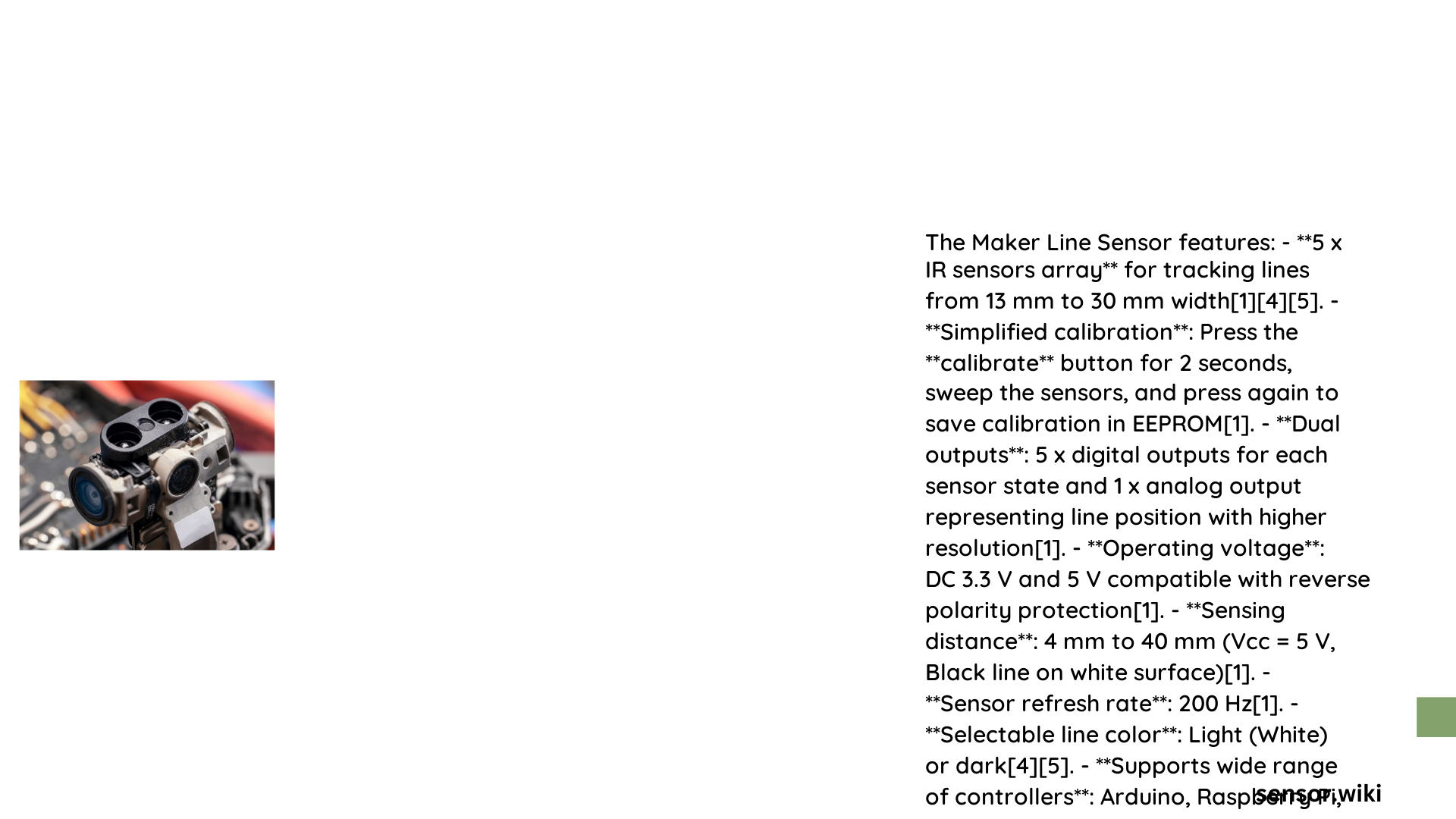The Maker Line Sensor represents a cutting-edge technological solution for precise line detection and tracking, utilizing advanced reflective sensor technology. This compact device enables sophisticated line-following capabilities across multiple domains, from robotics to industrial automation, by leveraging five integrated infrared sensors capable of detecting lines between 13-30 mm wide with remarkable accuracy and a detection range of 4-40 mm.
What Makes Maker Line Sensor Unique?
Core Technical Specifications
| Parameter | Specification |
|---|---|
| Dimensions | 68 x 28 x 7 mm |
| Weight | 14 g |
| Operating Voltage | 3.3V and 5V |
| Detection Distance | 4-40 mm |
| Sensor Type | 5 Reflective IR Sensors |
How Does Maker Line Sensor Work?
The Maker Line Sensor operates through a sophisticated mechanism of infrared emitters and phototransistors. When the sensor moves over a surface, it:
- Emits infrared light
- Measures reflected light intensity
- Determines line position through differential reflectance
- Provides both digital and analog output signals
What Are Primary Applications?
Maker Line Sensor finds extensive applications in:
- Robotics
- Autonomous navigation
- Line-following robots
-
Path tracking systems
-
Industrial Automation
- Conveyor belt tracking
- Automated guided vehicles
- Precision positioning systems
How to Install Maker Line Sensor?
Required Components
- Microcontroller (Arduino/Raspberry Pi)
- Jumper wires
- Power supply (3.3V/5V)
Installation Steps
- Mount sensor at appropriate height
- Connect power pins
- Wire digital/analog outputs
- Calibrate sensor
- Test line tracking performance
What Challenges Might You Encounter?
Potential challenges include:
– Inconsistent surface reflectivity
– Electrical noise interference
– Calibration complexity
– Environmental light variations
Troubleshooting Strategies
- Verify power connections
- Recalibrate in different lighting conditions
- Check sensor alignment
- Use shielded cables
- Implement software-based noise filtering
Performance Optimization Techniques
- Adjust sensor height
- Use complementary filtering
- Implement PID control algorithms
- Regular maintenance and cleaning
Advanced Configuration Tips

- Use analog output for smoother tracking
- Implement multiple sensor fusion
- Create adaptive calibration routines
- Design robust error handling mechanisms
Recommended Best Practices
- Maintain consistent sensor height
- Clean sensor surfaces regularly
- Use stable power supply
- Implement software-based error correction
- Conduct periodic performance assessments
Technical Limitations
- Limited detection range
- Sensitivity to surface variations
- Potential interference from ambient light
- Requires precise calibration
Future Development Potential
Emerging trends in Maker Line Sensor technology include:
– Machine learning integration
– Enhanced signal processing
– Miniaturization
– Improved environmental adaptability
Reference:
– Cytron Maker Line Sensor Official Documentation
– Robotics Sensor Integration Guide
– Advanced Sensing Technologies
